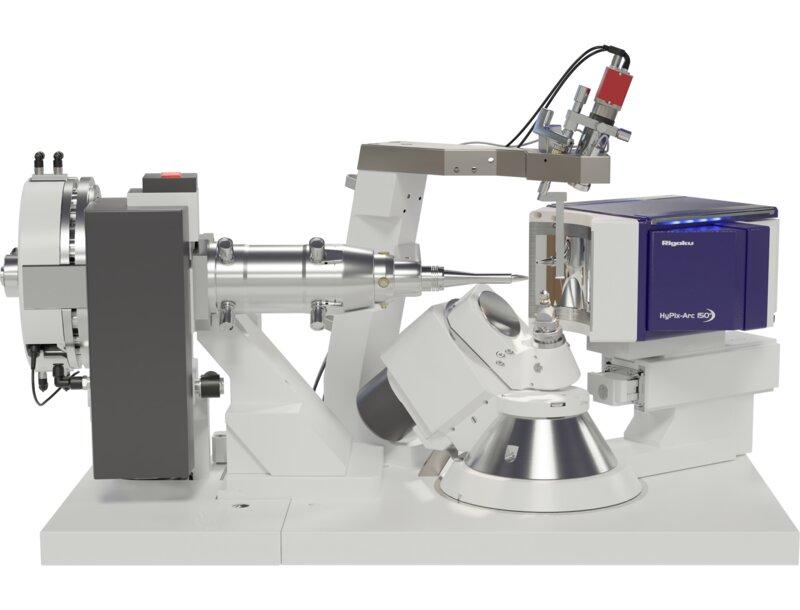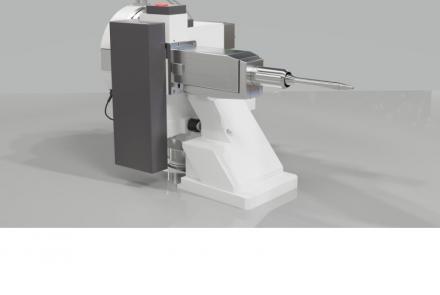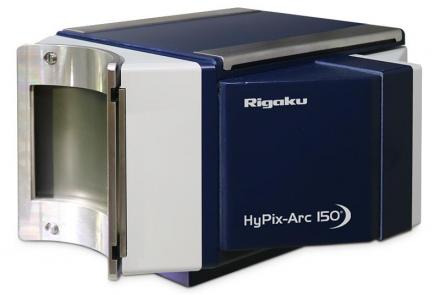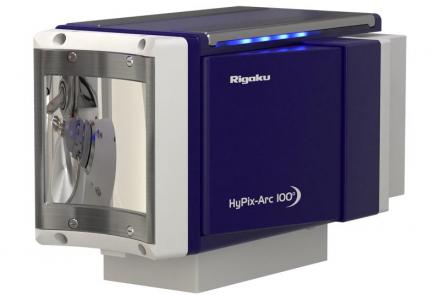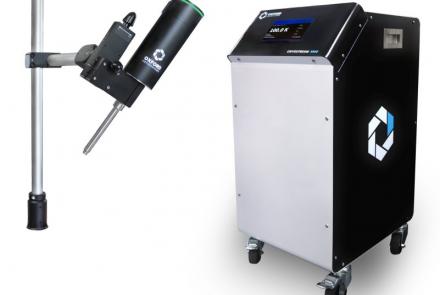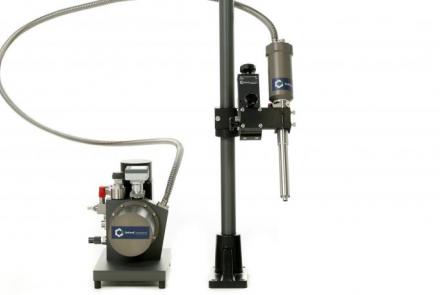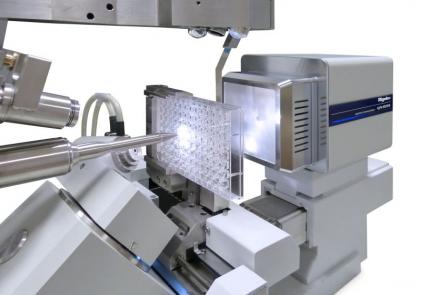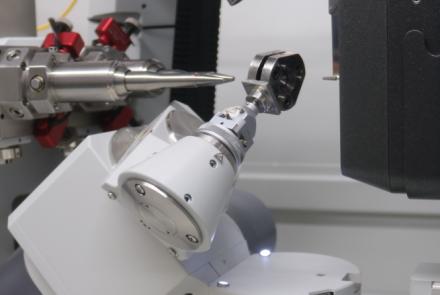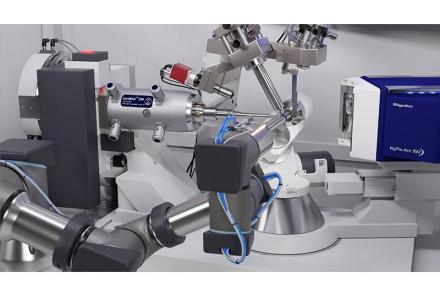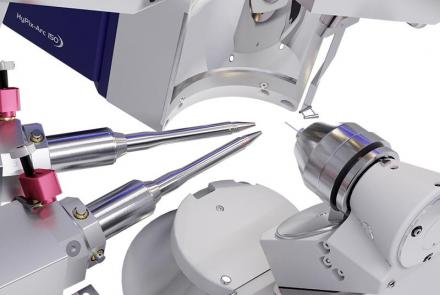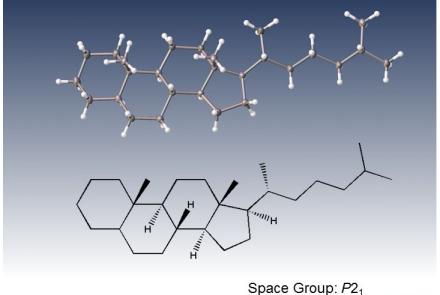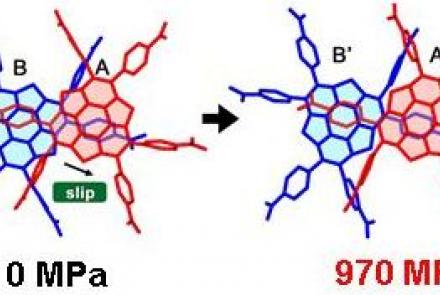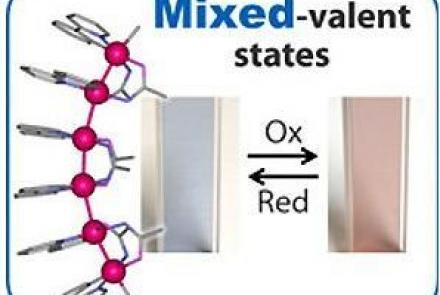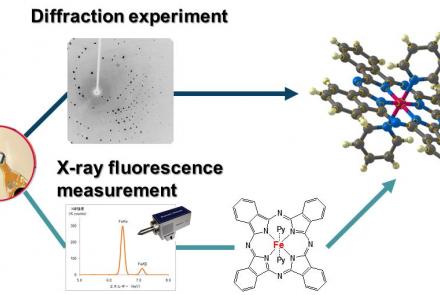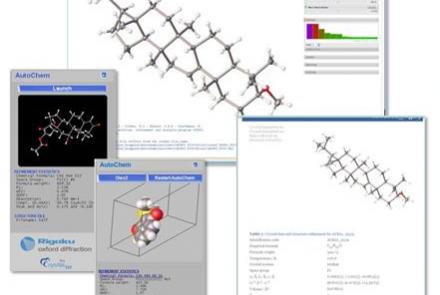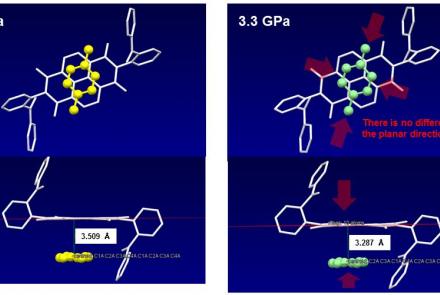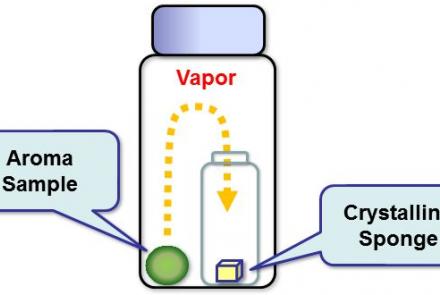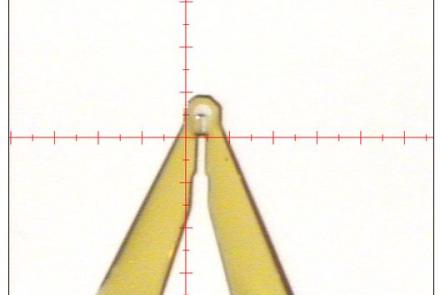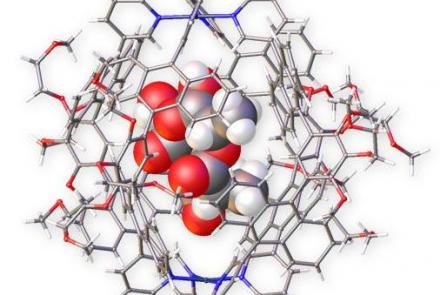XtaLAB Synergy-DW VHF
Benefits
- Faster, accurate data collection due to high-speed kappa goniometer, high-flux rotating anode X-ray source, fast, low-noise X-ray detector, and highly optimized instrument control software.
- Enhanced experimental versatility with two switchable wavelengths (the following combinations are available: Mo/Cu, Cu/Cr, Cu/Co, Cu/Ag, and Ag/Mo; only Mo and Cu optics are available with VHF style optics).
- Improve your ability to investigate small samples due to the increased flux from the rotating anode X-ray source as well as the extreme low noise of the HyPix X-ray detectors. Noise-free images mean you can count longer for weakly diffracting crystals without a loss in data quality arising from detector noise.
- Highest level of user safety with multiply redundant electromechanical safety circuits built into the ergonomically designed radiation enclosure.
- Minimize your downtime by utilizing built-in online diagnostics and troubleshooting to diagnose and fix almost all problems without a site visit. Even though two wavelengths are available, only one X-ray source is used.
- Automatically solve small molecule structures and determine what your sample is in a few seconds before committing to a full dataset by using the “What is this?” feature.
- Increased data collection speed due to the increased flux of the X-ray source.
- Enhance your ability to resolve large unit cells, twins or incommensurate lattices when you select the optional motorized variable beam slit in order to alter divergence to adapt the source to your sample’s requirements.
Download the brochure
To download this brochure, please fill out the following form (Fields marked with * are required)
Dual wavelength rotating anode X-ray diffractometer with HPC X-ray detector
The ultimate single crystal X-ray diffractometer for a wide range of crystallographic applications
Specifications and features
| Product name | XtaLAB Synergy-DW VHF |
| Core attributes | Dual-wavelength rotating anode X-ray source diffractometer with hybrid pixel array detector and kappa goniometer |
| Detectors | HyPix-6000HE or optionally the large theta coverage detectors HyPix-Arc 100° or HyPix-Arc 150° |
| X-ray source | PhotonJet-R X-ray source with a target that is constructed with two different X-ray source materials (the following combinations are available: Mo/Cu, Cu/Cr, Cu/Co, Cu/Ag, and Ag/Mo; only Mo and Cu optics are available with VHF style optics) and is coupled with an auto-switching dual-wavelength optic. |
| Goniometer | Fast kappa geometry goniometer that allows data collection scan speeds of up to 10°/sec. |
| Accessories | Oxford Cryostream 1000, Oxford Cobra, XtaLAB Flow robotic system, XtalCheck-S, High Pressure Kit |
| Computer | External PC, MS Windows® OS |
| Core dimensions | 1300 (W) x 1875 (H) x 850 (D) (mm) |
| Mass | 600 kg (core unit) |
| Power requirements | 1Ø, 200-230 V, 20 A |
Options and Accessories
The following accessories are available for this productApplication Notes
The following application notes are relevant to this productApplication Bytes
Learn more about our products at these events
| Booth number | Date | Location | Event website | |
|---|---|---|---|---|
| Webinar: Illuminating The World of Sub-Micron Crystal Structures with the XtaLAB Synergy-ED: A Review | Webinar | Register Now | ||
| UKPorMat | - | Liverpool, United Kingdom | Website | |
| 30th Croatian-Slovenian Crystallographic Meeting | - | Veli Losinj, Croatia | Website | |
| Zurich School of Crystallography | - | Zurich, Switzerland | Website | |
| Konwersatorium Krystalograficzne | - | Wrocław, Poland | Website | |
| AFC 2024 (French Cristallography Meeting) | - | Montpelier, France | Website | |
| ACA 2024 | - | Denver, CO | Website | |
| ECM2024 | - | Padova, Italy | Website | |
| Epdic 18 | - | Padova, Italy | Website | |
| 11th Meeting of the Young Crystallographers at Rigaku | - | Neu-Isenburg, Germany | Learn more | |
| Single-Crystal Users’ Meeting | - | Neu-Isenburg, Germany | Learn more |

